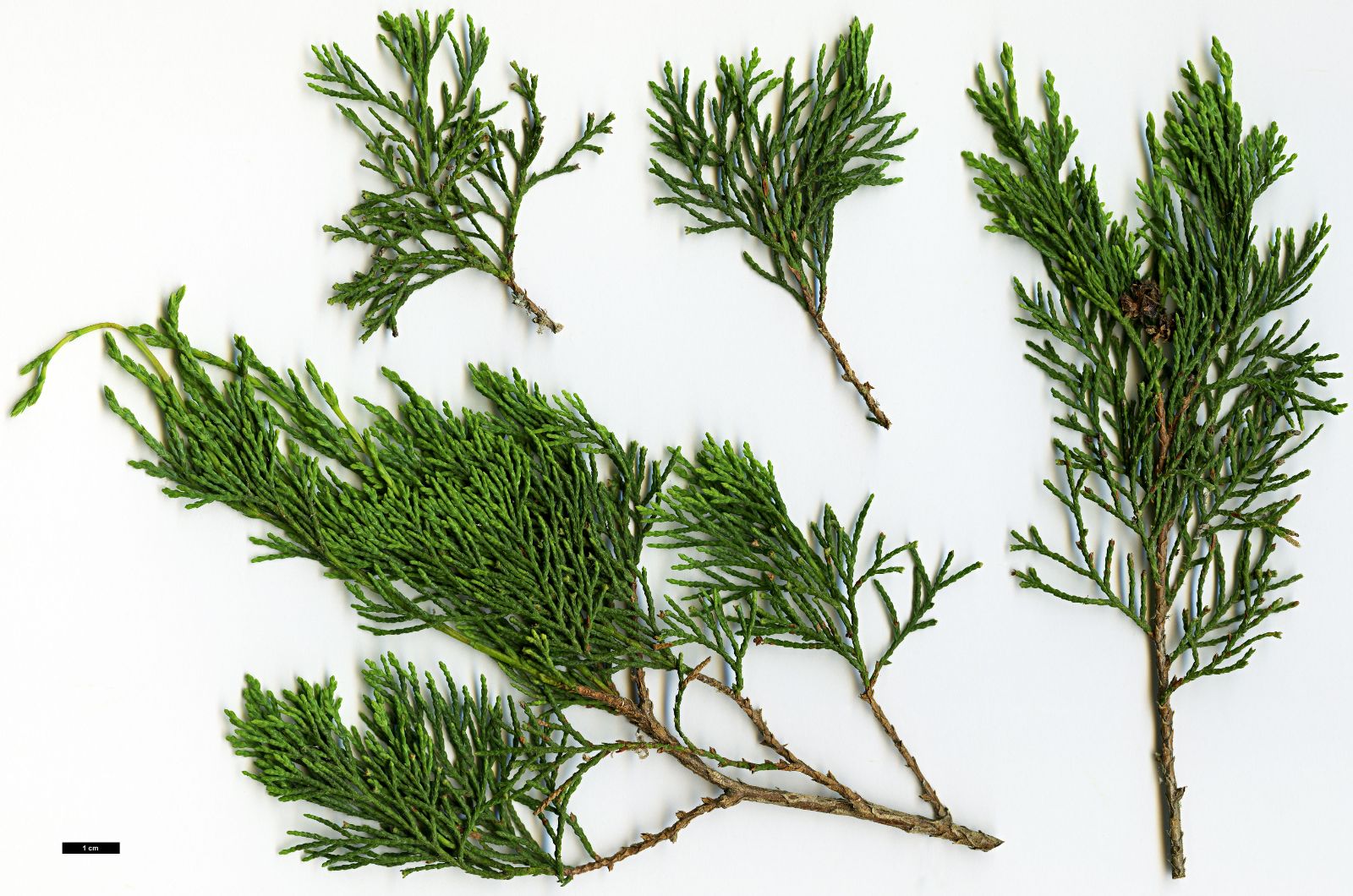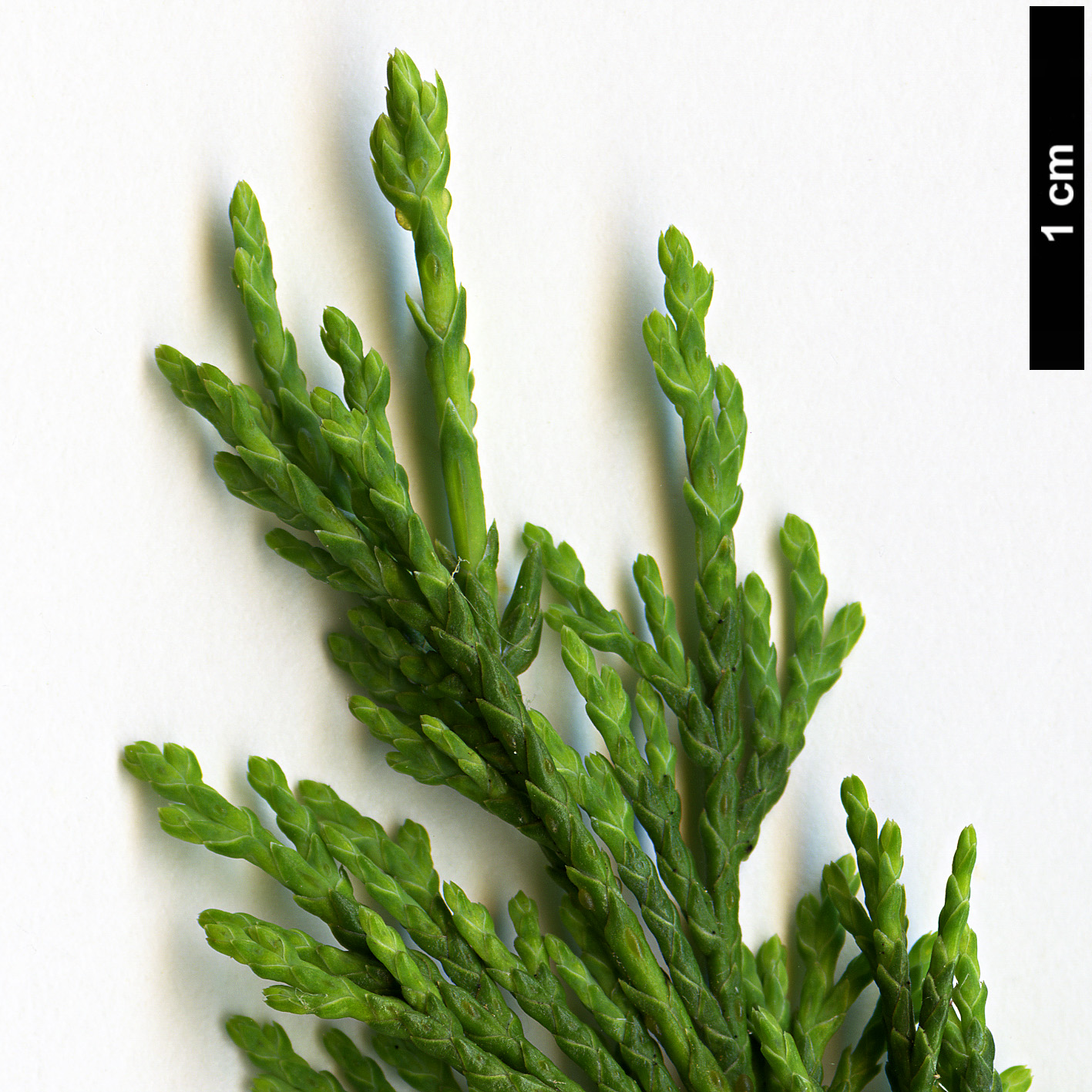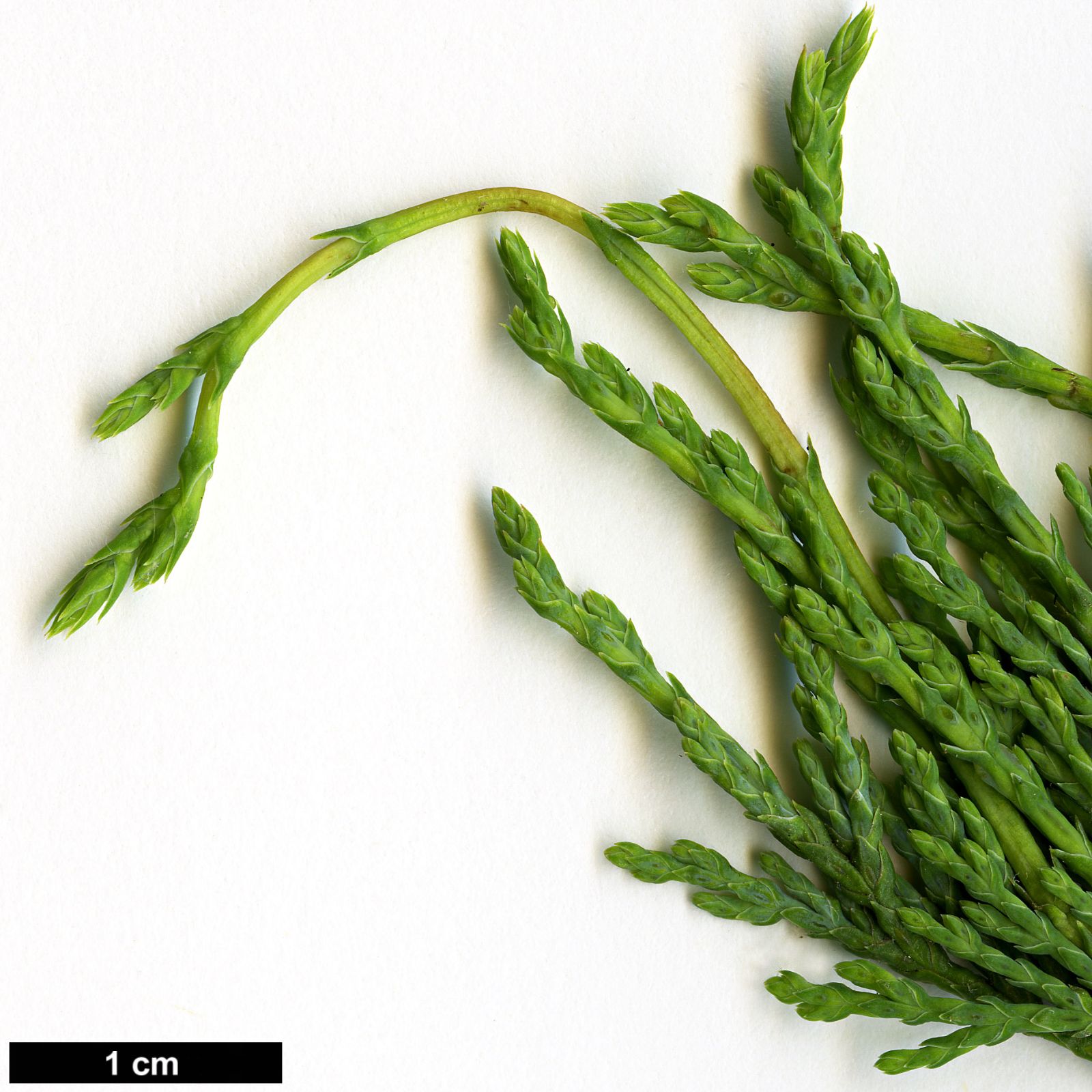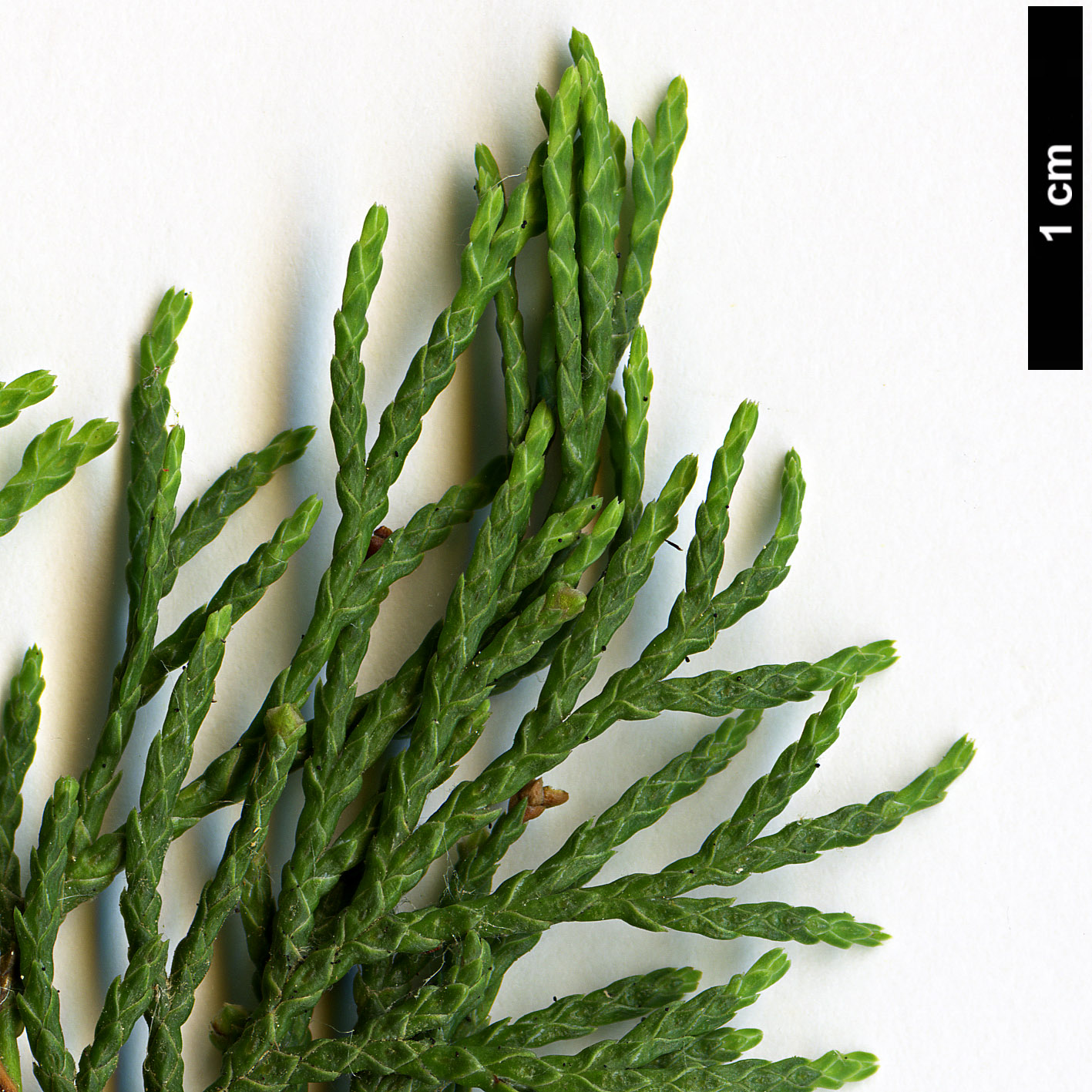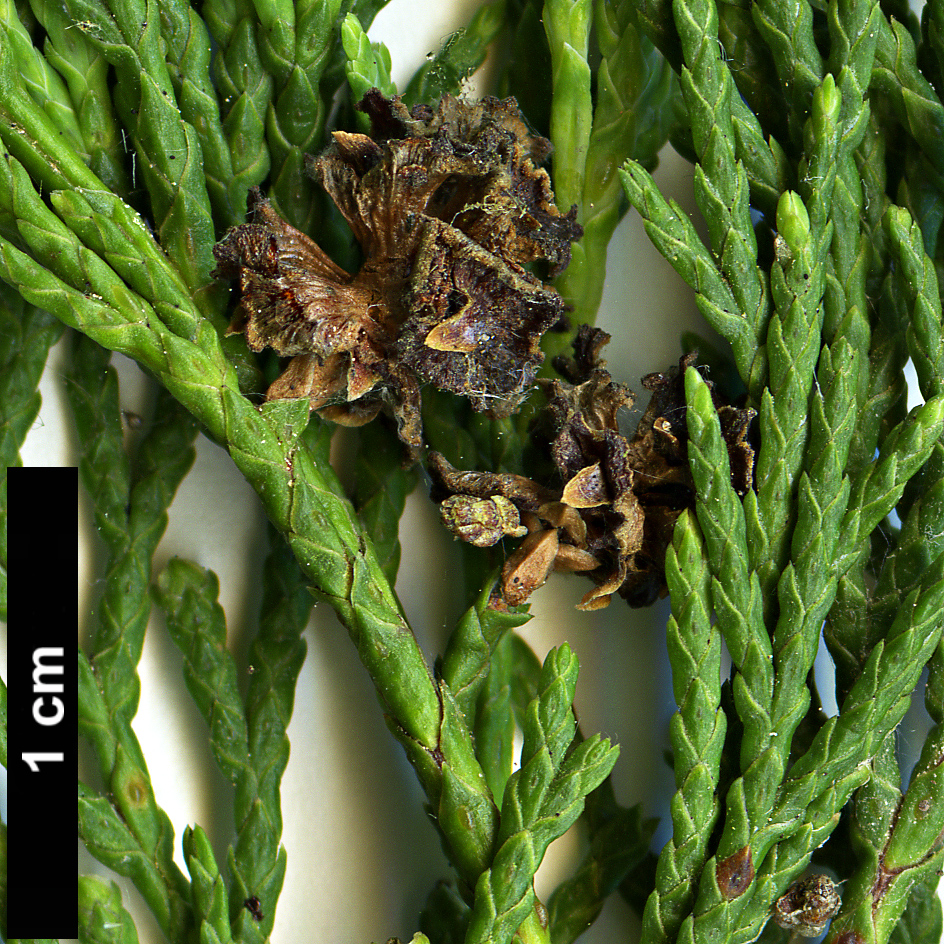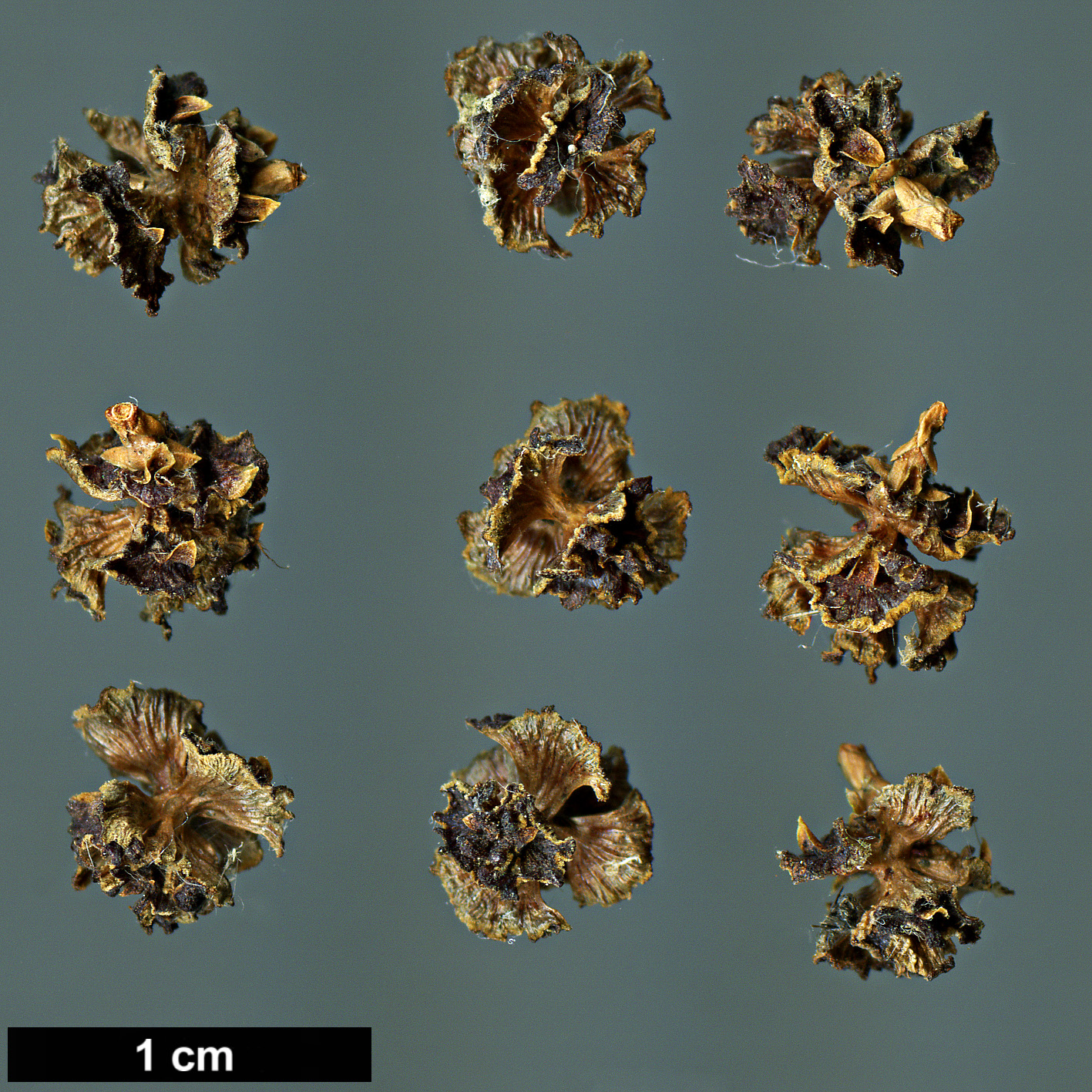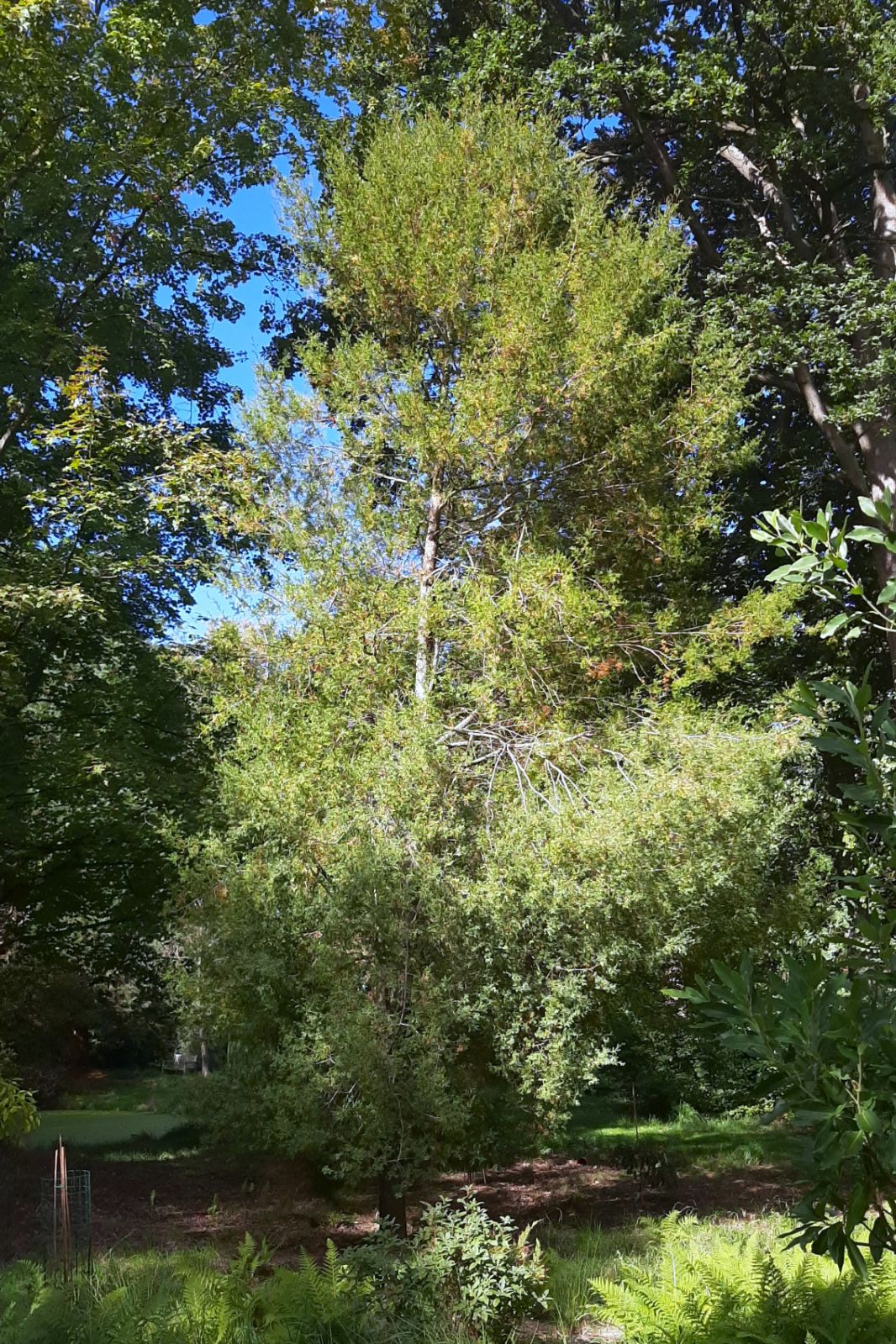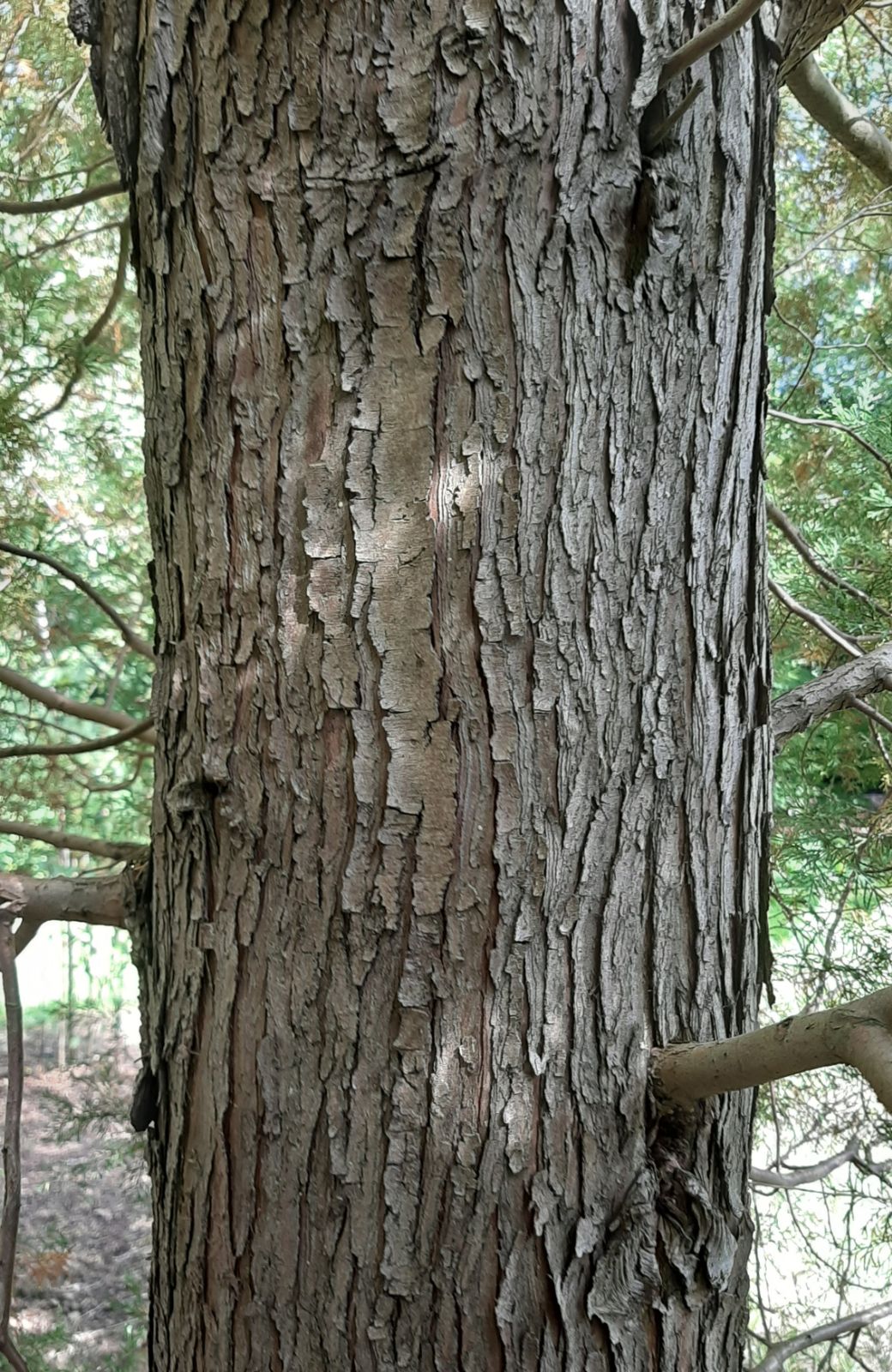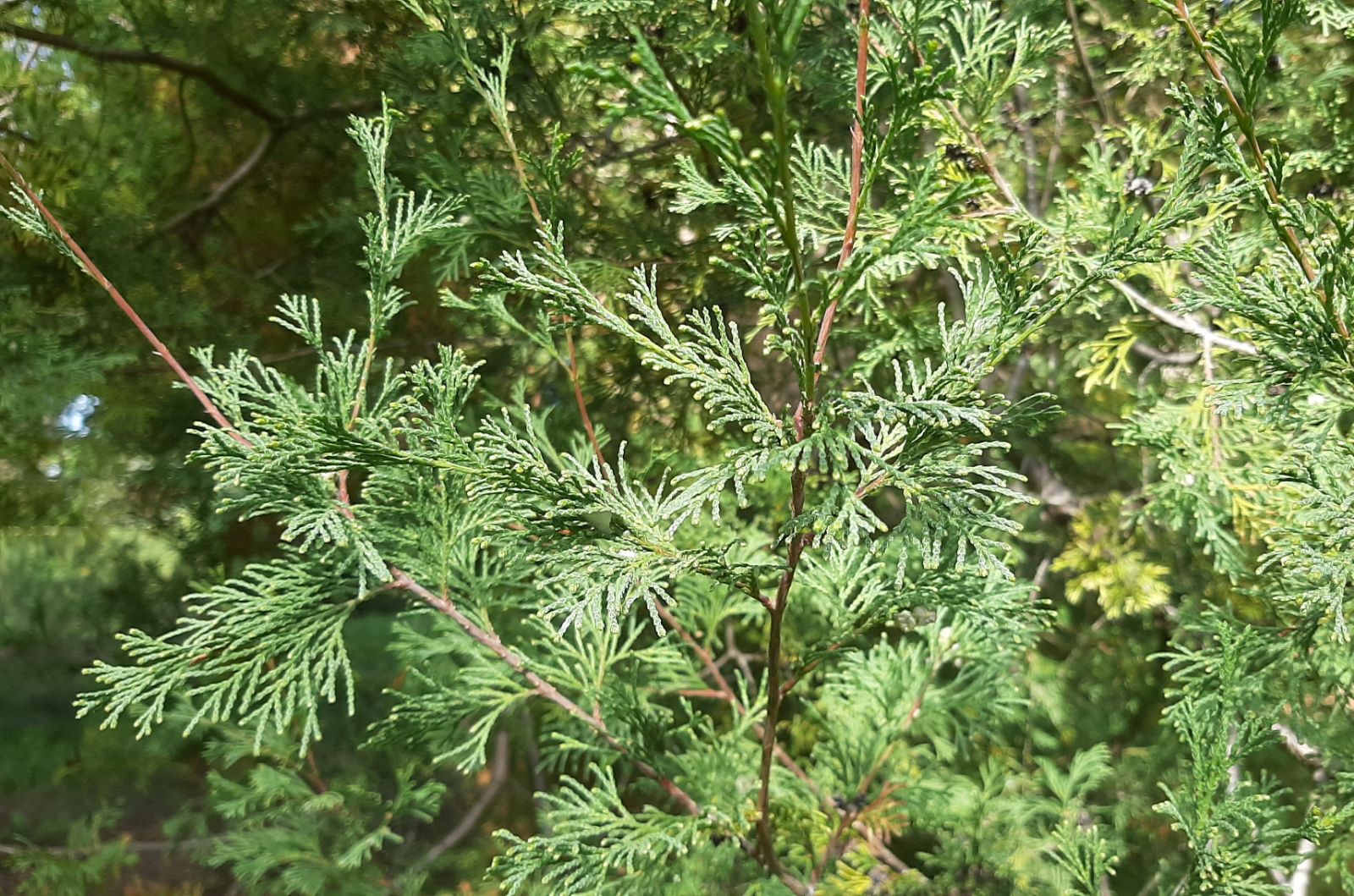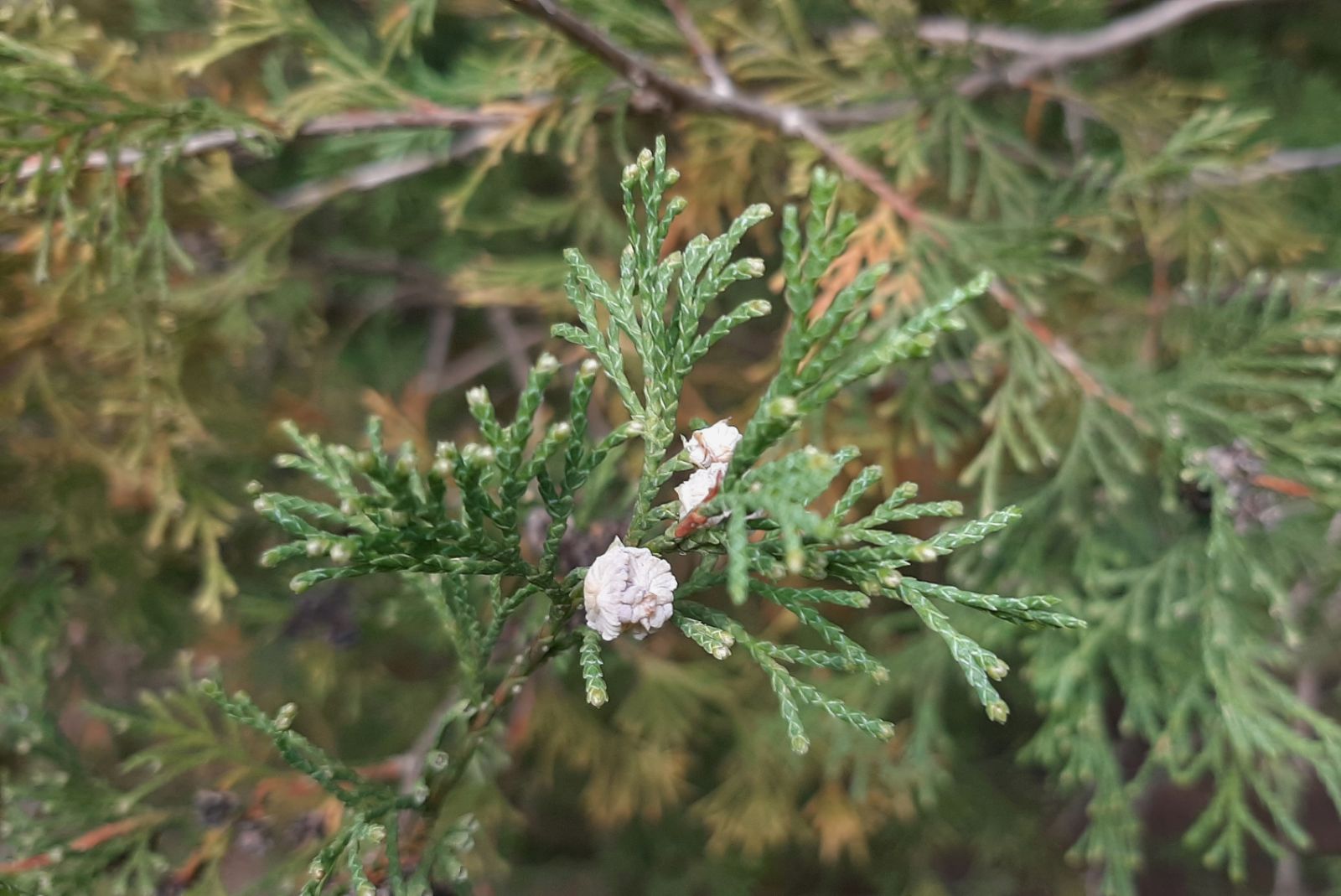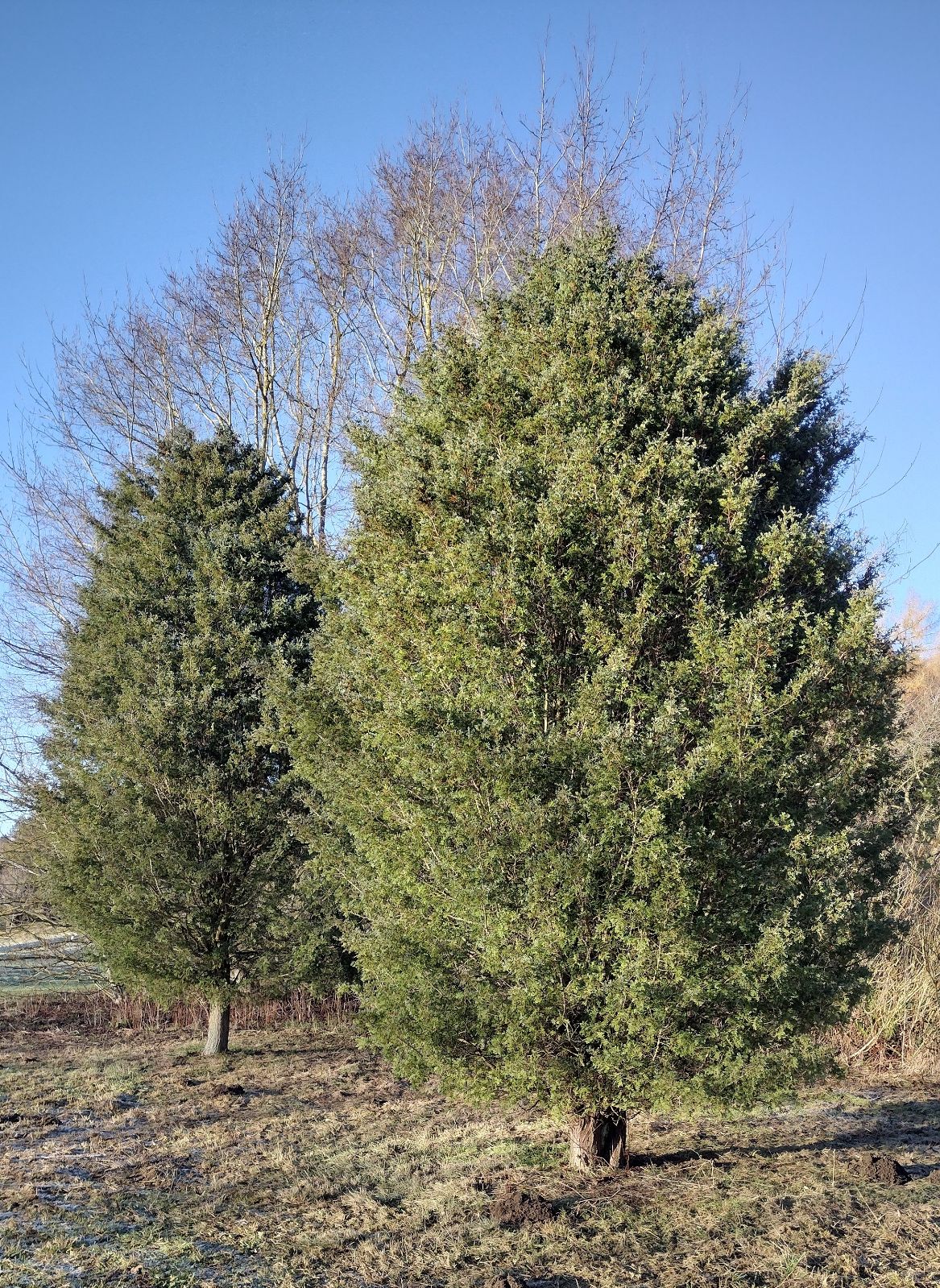Chamaecyparis thyoides
Credits
Article from Bean's Trees and Shrubs Hardy in the British Isles
Recommended citation
'Chamaecyparis thyoides' from the website Trees and Shrubs Online (treesandshrubsonline.
Genus
Synonyms
- Cupressus thyoides L.
- Ch. sphaeroidea Spach
- Thuja sphaeroidea Spreng.
A tree usually 20 to 50, but up to 70 or 80 ft high in a wild state, with a reddish-brown trunk 2 ft or more in diameter; of slender columnar form in a young state, and shortly branched. The smaller ramifications are flat, two-ranked, and somewhat fan-shaped; the branching as a whole is bushy, spiral, and irregular. The trees shed their effete branchlets in fan-shaped pieces, 1 to 3 in. long. Leaves in four ranks, the lateral ones usually longer than those above and beneath, which are marked with a conspicuous raised gland; they are 1⁄16 to 1⁄12 in. long, pointed, the lateral ones spreading at the tips; dull grey-green. Cones 1⁄6 to 1⁄4 in. in diameter, globose, very glaucous; scales six, each with a triangular boss in the centre.
Native of eastern N. America, usually found in cold, swampy, often inundated ground; introduced in the eighteenth century. This tree was more frequently cultivated in earlier times, before the Californian and Japanese cypresses were introduced, than it is now. It is not so striking as they are, but is worth growing for its neat columnar habit. Although a swamp tree in its native country it will thrive better here in ordinary, deep, moist soil. In New Jersey immense quantities of trunks of this tree have been found immersed in swamps, many of them, although buried for hundreds of years, perfectly sound and not at all water-logged. It is very distinct in its branching from any other chamaecyparis. There are specimens of this conifer in the National Pinetum, Bedgebury, Kent, the best measuring 40 × 51⁄4 ft (1957) and 46 × 41⁄4 ft (1964). A few others have been recorded, but none larger than these.
From the Supplement (Vol. V)
specimens: Kew, a glaucous tree, pl. 1879, 42 × 23⁄4 ft (1980); National Pinetum, Bedgebury, Kent, pl. 1928, 50 × 41⁄2 ft (1980); Nymans, Sussex, 49 × 31⁄4 ft and, a glaucous tree, 50 × 33⁄4 ft (1985); Borde Hill, Sussex, Warren Wood, pl. 1922, 50 × 31⁄2 ft (1981); Woburn Abbey, Beds., 48 × 33⁄4 ft (1977).
cv. ‘Andeleyensis’. – There is a probable sport from this named ‘Andeleyensis nana’, which is similar to the original but less tall and more spreading.
cv. ‘Ericoides’. – It should have been added that this makes a broad-conic bush to about 5 ft high. The foliage is dark bronze-green in summer, purplish in winter, when it may be burned by frost. A dwarfer and denser sport from this carries two names – ‘Purple Heather’ and ‘Heatherbun’.

